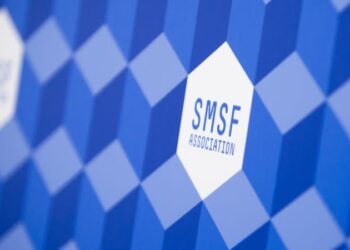Chris Bowen has gone on the record several times this year using the comparison of a nurse and a retired shareholder to highlight the inequitable scenario in a bid to sell the proposal to end cash refunds for excess dividend imputation credits.
“A nurse who earns $67,000 a year we charge $13,000 in tax. But a retired shareholder who has $67,000 in income we charge her zero tax and then write her a cheque for $27,000. That is not OK,” Mr Bowen said.
SMSF Adviser’s sister title, Accountants Daily, previously reported that analysis conducted by TaxBanter senior tax trainer Robyn Jacobson showed there were several discrepancies that showed the numbers did not stack up.
Ms Jacobson previously noted that the franking rate is too high if Mr Bowen’s remarks imply that the franking credit refunded to the shareholder is $27,000.
“Assuming that the income of $67,000 to which Mr Bowen refers is the taxable income — that is, the shareholder has the same taxable income as the nurse — then this includes the dividend grossed up for the franking credit, suggesting that the dividend (actual cash received) is $40,000 and the franking credit (notional assessable income) is $27,000.
“However, this means that the franking rate applying to the dividend is just over 40 per cent, which is not possible under the imputation rules.”
Mr Jacobson also noted that if one is to accept those figures provided by Mr Bowen, the refundable amount would not add up.
“The income tax the shareholder pays on the taxable income of $67,000 — before the franking credit is applied — is $14,132 including the Medicare levy and the LMITO of $530 (same as the nurse),” she said.
“Then the franking credit of $27,000 is applied which reduces the tax payable to zero, and produces an excess franking credit of $12,868. The amount refunded to the shareholder is the excess franking credit of $12,868, not the entire amount of the $27,000 franking credit.”
She stated that if an SMSF held the shares, and all of the members were in pension phase, and none of the members have exceeded their $1.6 million transfer balance cap (which would cause the SMSF to pay some tax on the earnings attributable to the capital above $1.6 million held in an accumulation account and therefore affect the outcome), then the income of the SMSF would be tax-free, in which case the SMSF would receive a full refund of the franking credit.
“But the refund representing the excess franking credit would be $20,100, not $27,000,” Ms Jacobson added.
In further analysis and using a maximum franking rate of 30 per cent, Ms Jacobson listed a number of scenarios to illustrate the correct figures that would apply:
The taxable income is $67,000 — then the dividend is $46,900, the franking credit is $20,100, and the refundable tax offset is $5,968;
The dividend is $67,000 — then the franking credit is $28,714, the taxable income is $95,714 and the refundable tax offset is $3,444;
The dividend is $40,000 — then the franking credit is $17,142, the taxable income is $57,142 and the refundable tax offset is $6,411;
The franking credit is $27,000 — then the dividend is $63,000, the taxable income is $90,000 and the refundable tax offset is $4,933.
Mr Bowen has now provided an update to Nine’s Australian Financial Review clarifying what his calculation was based on and has adjusted his figures.
According to Mr Bowen’s new figures, the refundable tax offset, representing the refundable franking credit, is $28,700, not $27,000, based on a grossed-up dividend of $95,667 (i.e. cash dividend of $66,967.90). Using a yield of 5 per cent, this is a capital base of $1,339,333.
Ms Jacobson said this assumes that the SMSF is wholly in pension phase and none of the members exceed their $1.6 million transfer balance cap.
She said that Mr Bowen’s original remarks were ambiguous and misleading and that she was grateful for the clarity on the figures.



Want to compare something else? What about this situation? Retired couple with $3M in an SMSF 100% in T/D’s earns $90K interest (wouldn’t that be nice?), has not tax withheld and therefore pays now tax on earnings. Another SMSF with retired members has $1.5M, takes a higher risk and invests partly in shares earning $90K also (including the associated franking credit). They lose whatever franking credit they have previously been entitled to, thereby paying tax. The after tax return on the share investment is no longer going to reward the risk taken.
They lack an understanding of how things are intertwined and we will pay a high price if we give them the keys. They will be blind folded at the wheel.
Would like to know how Industry Fund members can use the tax exempt status of the fund.The members are not employees, They do not use this item ie franking credit to benefit the employee ,fund or charity.Please explain how this benefit is legal.
They don’t use the tax exempt status of the industry fund “business”. The reason a member of an industry fund (or any pooled fund) may still get the franking credit refund is because the taxable entity is actually the superannuation fund as a whole – not the individual members. So if the pooled fund has enough member assets still in accumulation phase, ie paying 15% tax on earnings, CGT etc, and this tax payable exceeds the franking credits allocated to those members who are in tax exempt pension phase, then the pension phase members can still be credited with their full franking credit refund as a part of their tax exempt imcome.
However if you are in an SMSF and all members are in pension phase, with less than $1.6M in transferred assets, and 100% of assets are franked dividend paying Australian shares, then the fund will pay no tax, meaning the franking credits would be forfieted to Mr Bowen and his greedy friends.
This is the patent unfairness of this backward step / policy of the ALP. It treats people in the same financial situation very differently based on the superannuation fund they happen to be in (plus if they receive a part governmenbt pension before a certain arbitary date etc etc – more and more ridiculaous the more you dig…..).
This is NOT tax reform.
All that the politicians on both sides are doing only affect ordinary people like you and I.
In their effort to generate more revenues and savings, how about taking measures that affect them like the following?
– Taking pay cuts (Australian politicians are among the highest paid if not the highest paid in the world per a survey a few years ago)
– Lowering the their SG package to 9.5% like everyone else
– Cut their retirement benefits and
– Their life time pensions to what everyone else is receiving.
So a retired nurse pensioner in a union or industry fund will still get the franking credits gift, this issue seems to never be discussed? Its only the SMSF that misses out not those in large funds, Hmmh
vote labor at the peril of all Australians – whilst the government is far from perfect, the alternative is a living hell!
And the implication is that the retiree in this example is a white collar fraud, that has never paid any tax. Somehow these retirees that are receiving these franking credit “gifts” have all been the recipients of retirement nest eggs gifted by ‘Merlin the Magician’. These retirees, in the main have saved & paid tax throughout their whole lives. These retirees will be saying if ‘Bowen’ thinks franking rebates are a gift, what ‘Bowen’ is attempting to do is straight out theft.
So the franking credit is included as income but you don’t actually get the benefit of it? He is going to have to rethink
Chris Bowen is still quoting the same old figures on Q&A tonight!!
What else would anyone expect from a Wayne Swan clone/clown?
I just had a discussion with s Labour Party member who , like Bowen , has no idea about franking credits . The comment was there Is no tax paid by the retiree investor. I showed her s dividend statement which shows tax is paid, just like on a Payment Summary, the labour supporter was surprised and conceded my point that tax is paid by the investor. The tax is not a gift as Bowen had said.
He needs to go back to the primary school arithmetic
How many share investors earn $95K in dividends per annum? Surely this is an inappropriate example. And, how about the inequity of giving a refund to the tax paying investor in the form of tax credits and nothing to the non-tax paying investor whose share of the company profits before tax may have been the same??
What else have they got wrong?
I have seen no clarification of the position with individual investors who are entitled to a franking credit refund and make a donation to a Deductible Gift Recipient. Does this mean that they will lose all or part of their income tax deduction, as it will increase the refund that the taxpayer does not get? Similarly with other legitimate income tax deductions.
Yes but he is comparing a $95.7k dividend gross of co. tax with $67k gross of tax income. He should be comparing to $95.7k gross salary. Still totally misleading. Can he explain that as well?
Nurse gross income $67,000, tax $14,132.
Shareholder gross income $95,667, tax $28,700.
Shadow treasurer innumerate much?